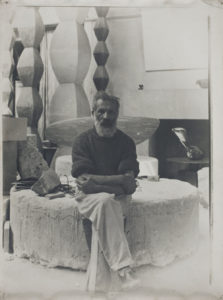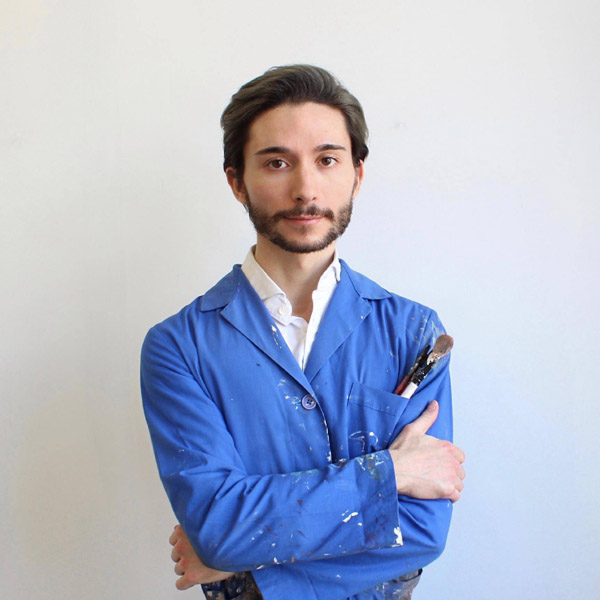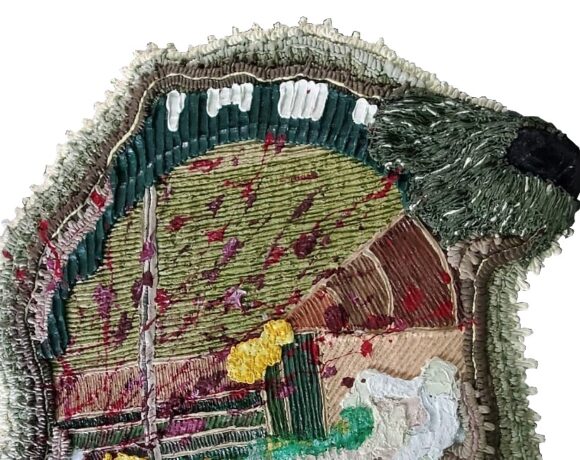Brancusi. Sublimation of form, at BOZAR, pays homage to the Romanian-born French sculptor. Since last retrospective show on his work, at Centre Pompidou in Paris, it is the first European exhibition of its kind, after twenty-five years. It is also the biggest Belgian show on his poetics. The exhibition is also part of a festival: Europalia. Dedicated to the cultures of the European Union, the 2019 edition focuses on Romanian arts and history. Several events will take place in Brussels, as well as in different Belgian locations.
Within the art-déco rooms of the museum, BOZAR highlights a career in a chronological, as well as thematic order. The red thread of the show ties together sculpture, video, photography and works on paper. Born in 1876, Brancusi will see a large part of twentieth century, both as a spectator and actor. He will take part in artistic innovations, legal battles, and successful exhibitions, marking the history of modern sculpture. Of humble origins, the sculptor will study in his home country, at the School of Arts and Crafts of Craiova, and at the Academy of Fine Arts, in Bucharest. One of his earliest work is a manifesto: a reinterpretation of an art-historical subject, his écorché (anatomic figure study) seems to predict the sublimed forms of the artistic maturity. Having relocated to Paris, in 1904, the artist will work for successful sculptors of the time. In the exhibition, the comparison with pieces by Antonin Mercié and Auguste Rodin, for whom he will work as an assistant, is historical analogy, more than stylistic proximity: “nothing grows in the shade of tall trees”, he will say. He will then start working exclusively on his own. One of his most acclaimed achievement is the “direct carving” technique, experimented since 1907. It is the reject of any preconceived sculptural model, and the artist will start working matter directly.
In Avant-gardist Paris, the artist’s studio will become a meeting point for the local and international intellectuality. Many photographers, Man Ray among others, will portray popular characters of the time, like artists, dancers and collectors, next to the sculptor’s pieces. Soon after his first meeting with the photographic medium, thanks to Man Ray, however, the sculptor will want to be the only photographer of his pieces, as well as of the visitors in his studio. His photos will be the outcomes of his research on forms and light: a medium complementary to sculpture. His three-dimensional pieces, like mirrors that distort the reality around them, either augment or absorb light emissions. Similarly, Brancusi’s photography captures a natural, ephemeral phenomenon. The artwork is eventually portrayed as an amplifier of such phenomenon, the movement of light in space.
The exhibition features, next to the works of the early part of his career, also different series: the Muses, the Birds (Maiastra, Bird in Space), and the Torsos. The museum has also commissioned new performances, which will take place in the exhibition space, by Anne Theresa de Kraesmaeker, Manuel Pelmus, and other international artists. Overall, the retrospective show provides new key of understanding contemporary art. In the art world of today, Brancusi’s heritage, both ancient and futuristic, seems to still speak loudly in a clear, living language.
Elio Ticca
Info:
Brancusi. Sublimation of forms
5th october – 30th november 2019
Opening time: Tue – Sun, 10 am – 6 pm | Thu, 10 am – 9 pm | closed on Monday
BOZAR
Centre for Fine Arts – Rue Ravensteinstraat 23, 1000 Brussels
 BOZAR Brancusi Constantin, Prométhée, 1911 © Centre Pompidou, MNAM-CCI, Dist.RMN-Grand Palais – Adam Rzepka, Sabam Belgium, 2019
BOZAR Brancusi Constantin, Prométhée, 1911 © Centre Pompidou, MNAM-CCI, Dist.RMN-Grand Palais – Adam Rzepka, Sabam Belgium, 2019
 BOZAR Brancusi Constantin, Autoportrait dans l’atelier les Colonnes sans fin I à IV, Le Poisson (1930), Léda (1926), +- 1934 © Centre Pompidou, MNAM-CCI, Dist.RMN-Grand Palais – Philippe Migeat, Sabam Belgium 2019
BOZAR Brancusi Constantin, Autoportrait dans l’atelier les Colonnes sans fin I à IV, Le Poisson (1930), Léda (1926), +- 1934 © Centre Pompidou, MNAM-CCI, Dist.RMN-Grand Palais – Philippe Migeat, Sabam Belgium 2019
 BOZAR Brancusi Constantin, Léda, 1926 © Centre Pompidou, MNAM-CCI, Dist.RMN-Grand Palais – Adam Rzepka, Sabam Belgium, 2019
BOZAR Brancusi Constantin, Léda, 1926 © Centre Pompidou, MNAM-CCI, Dist.RMN-Grand Palais – Adam Rzepka, Sabam Belgium, 2019
 BOZAR Brancusi Constantin, Muse endormie, 1910 © Centre Pompidou, MNAM-CCI, Dist.RMN-Grand Palais – Adam Rzepka, Sabam Belgium, 2019
BOZAR Brancusi Constantin, Muse endormie, 1910 © Centre Pompidou, MNAM-CCI, Dist.RMN-Grand Palais – Adam Rzepka, Sabam Belgium, 2019

Elio Ticca (Nuoro, Italy, 1988) is a visual artist and author. Graduated in visual arts and history of art, is a freelance contributor of Juliet Art Magazine, and other publications. He lives and works in Brussels.






NO COMMENT